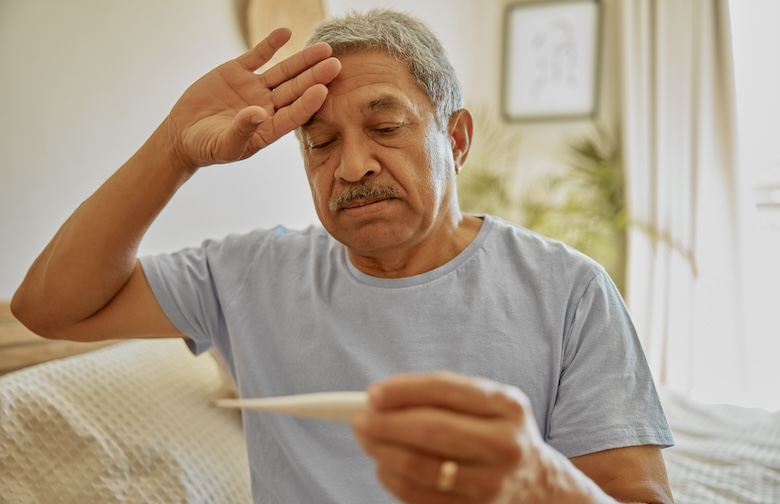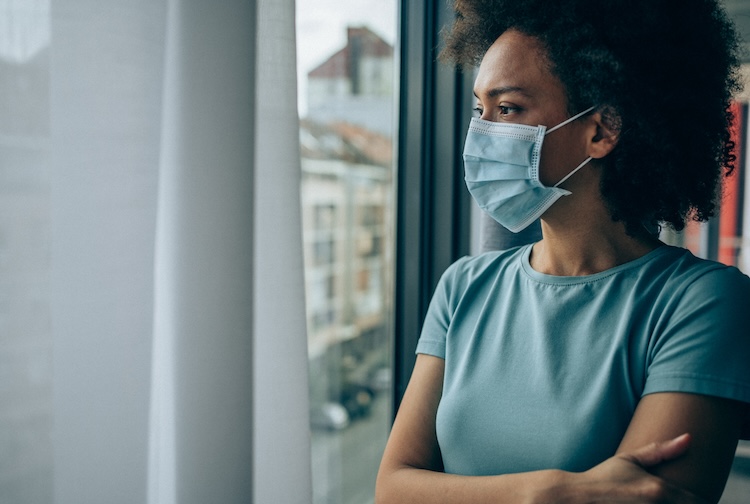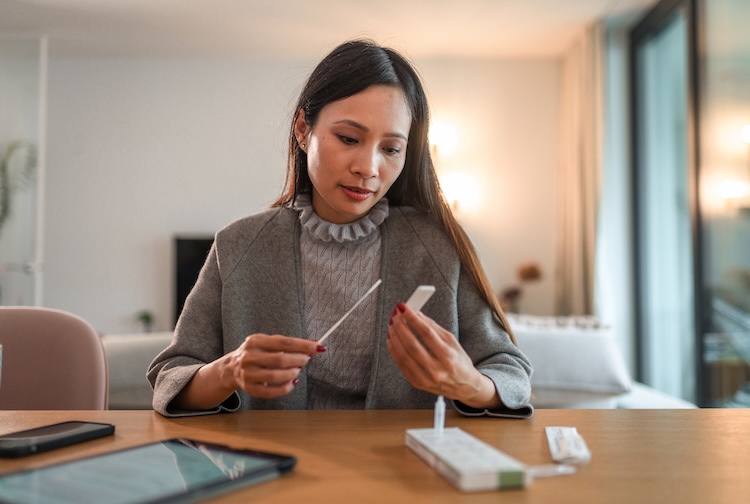
What the COVID-19 isolation changes mean for respiratory illnesses
VCU Health infectious disease experts explain what the new federal COVID-19 isolation guidelines mean and why they changed.
March 05, 2024 Under the new federal guidelines, people can resume normal activities if they are fever-free for 24 hours without the assistance of medicine and their symptoms are mild and improving. (Getty Images)
Under the new federal guidelines, people can resume normal activities if they are fever-free for 24 hours without the assistance of medicine and their symptoms are mild and improving. (Getty Images)
By Sara McCloskey
As the world prepares for the fourth year of COVID-19 being in our lives, some pandemic-related restrictions are being loosened.
In early March, the Centers for Disease Control and Prevention issued new recommendations for how long an individual infected by the coronavirus should stay at home and away from others.
Under the new CDC guidelines, people can return to work or school if they don't have a fever for 24 hours without the assistance of medicine. Their COVID-19 symptoms also should be mild and improving. Previously, the agency called for people who test positive for COVID-19 to stay at home for five days and they could stop isolating if they didn’t have symptoms after that time.
“These new recommendations were created to be a more simplified, practical way to prevent the spread of COVID-19 and other highly contagious respiratory viruses,” said Gonzalo Bearman, M.D., VCU Health infectious disease expert. “We are thankfully seeing less people hospitalized after getting sick from COVID-19, which shows that vaccines, immunity from previous infections and prevention methods are more accessible to the larger population.”
You may still be able to spread the virus to others after not having a fever for 24 hours, so the CDC still recommends people take precautions for the next five days to reduce the risk of spread. These steps include washing your hands and wearing a facemask, among others.
Bearman and VCU Health’s infectious disease team have been on the frontlines of the COVID-19 pandemic and stay up to date on the latest information about the illness. Bearman spoke with VCU Health News about the newest CDC recommendations and what they mean for respiratory illnesses.
Why did the CDC change the isolation guidelines?
The agency updated these recommendations after seeing lower hospitalizations and deaths due to COVID-19. Federal health officials say COVID-19 is now less likely to result in severe illness than earlier in the pandemic. This is largely because of greater immunity to the virus from vaccines and previous infections as well as better treatment available to the community.
The new approach also aims to simplify isolation recommendations for respiratory illnesses as a whole, instead of issuing separate guidelines for different viruses.
Do these isolation guidelines apply to other respiratory illnesses?
The short answer is yes. These new recommendations aren’t technically COVID or virus-specific, but rather the CDC issued a Respiratory Virus Guidance to be a “practical” approach to address these health risks for the general public. This guidance does not apply to health care settings.
Respiratory viruses, particularly COVID-19, influenza (flu) and respiratory syncytial virus (RSV), have very similar symptoms. So sometimes, people are not sure what specific illness they have unless they get tested. Since these illnesses are also spread similarly, the strategies to prevent a sick person from spreading the virus to others are now more similar.
How do the new recommendations work?
Respiratory viruses typically spread from respiratory droplets and from hand-to-hand contact. For example, you could spread a respiratory virus if you sneeze into the air without covering your mouth or sneeze into your hand and touch another person’s hand.
The length of time you’re contagious, meaning when you can spread the virus, depends on how sick you are or how long your symptoms last. These factors vary from person to person.
Medical experts note that you are typically less contagious if your symptoms are getting better overall and you have not had a fever for 24 hours (and are not taking a medication that can reduce your fever).
Even if you feel better, you can still spread an illness. Once people go back to their normal activities, the guidance still encourages them to use prevention strategies for the next five days to curb the spread. These measures include social distancing, wearing a mask and washing your hands.
Is COVID-19 still a serious illness?
Yes. Compared to other respiratory viruses, the CDC says COVID-19 is still the greatest cause of severe illness and deaths. The rates are just much smaller than they were several years ago.
COVID-19 is still highly contagious, we just have more tools available to help protect ourselves. These tools include treatment, vaccines and even facemasks.
Who is the most at risk of getting severely sick after contracting COVID-19?
Those most at risk of getting severely sick from COVID-19 include young children, older adults and people with chronic health conditions.
We have seen hospitalizations change over the past four years, with most patients being people 65 years and older or young children. At the end of December 2023, about 70% of hospitalizations were those 65 years and older. Among children, infants under six months are the most frequently hospitalized due to COVID-19.
What should I do if I need to be isolated at home?
If you need to stay home because you’re sick with a respiratory virus, do your best to stay away from others. Here are some other things to consider to prevent spreading the virus in your home:
- Try to improve the ventilation at your home by opening windows, increasing air filtration and turning on fans to increase airflow.
- Wear a high-quality mask if you need to be around others at home and in public.
- If you can, try to use a separate bathroom from other people in your household.
- Don’t share personal household items, such as cups, towels and utensils.
How can I prevent myself from getting sick, specifically with COVID-19? And how can I prevent myself from spreading it to others?
Some preventative measures that weren't available at the beginning of the pandemic really should be utilized as much as possible. That includes getting vaccinated, which can prevent you from getting severely sick and needing to go to the hospital.
There are other lessons we learned from the pandemic that are beneficial to follow during the winter months, also known as respiratory illness season, including thorough hand washing, covering your mouth and nose when you sneeze or cough, wearing a facemask and staying home when you feel sick.



